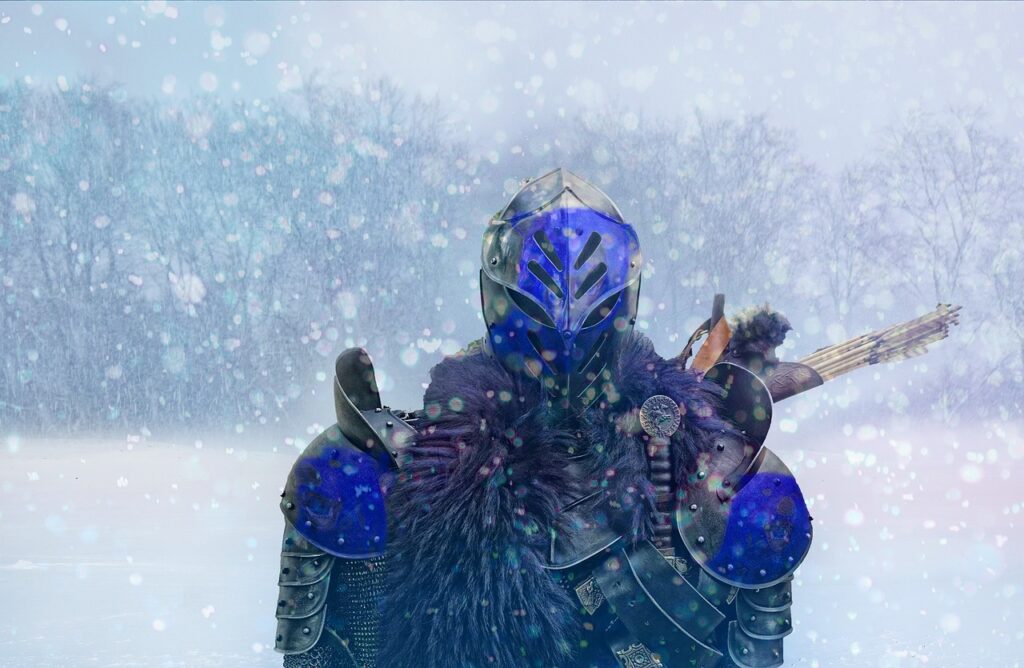Introduction: Ötzi the Iceman
On September 19th, 1991, during a hike through the Ötzal Alps, straddling the border of Austria and Italy, two explorers stumbled upon an astonishing find: a preserved corpse emerging from the ice.
Discovery and Initial Assumptions
Initial assumptions, which presumed this was a recent climbing accident victim, soon crumbled. Instead, researchers uncovered the mummified remains of an individual who had walked the Earth roughly 5,300 years ago, known today as Ötzi the Iceman.
Early Theories and the True Cause of Death
At the outset, Ötzi’s demise was thought to result from an unfortunate encounter with Alpine weather, possibly as a local shepherd or hunter trapped in a sudden freeze. However, an astonishing revelation was about to change this narrative entirely.
Ötzi’s Background
So, what can we discern about Ötzi, and how did he meet his fate? Over millennia, the Alpine climate preserved Ötzi’s body through cycles of freezing and drying, leaving behind vital clues for researchers.
Ötzi’s Physical Characteristics and Health
Ötzi stood at approximately 160 centimetres, weighed around 50 kilograms, and perished between 40 and 50. His active lifestyle contrasted with a genetic predisposition for cardiovascular problems. His intestines harboured whipworm parasites, and ulcer-inducing bacteria lurked in his stomach.
Ötzi’s Era and Lifestyle
He departed this world centuries before the construction of Stonehenge and the Great Pyramid, around 3350 BCE. Ötzi lived during the late Neolithic Copper Age when metalworking practices were burgeoning across Eurasia. He carried a copper axe from what’s now Tuscany and wore clothing fashioned from sheep and goat leather. His diet featured cultivated grains.
Ötzi’s Tattoos and Their Significance
Examination of Ötzi’s skin under various light spectrums revealed 61 tattoos. These markings correlated with areas of his body likely afflicted by pain, such as his degenerating knees, ankles, and spine. Researchers speculate that these tattoos may have been an early form of acupuncture, perhaps intended for therapeutic purposes.
The Prehistoric Murder Mystery Uncovered
A thorough examination revealed Ötzi’s death, unveiling a captivating prehistoric murder mystery. A decade into Ötzi’s study, a CT scan identified a crucial detail: a flint arrowhead lodged in his left shoulder, sparking a cascade of revelations about his final days.
The Sequence of Events Leading to Ötzi’s Death
A deep cut on Ötzi’s hand, showing signs of initial healing, suggested a recent injury, likely defensive, indicating a struggle with an assailant wielding a sharp blade. Ötzi may have dressed the wound with bog moss, known for its antiseptic properties, which was found with his remains.
Meanwhile, the pollen types and locations discovered in Ötzi’s digestive tract indicated a spring or early summer timeframe, with his last three days marked by urgency. Ötzi appeared to be fleeing from something.
Ötzi’s Final Moments
Approximately 33 hours before his death, Ötzi stood about 2,500 meters near the timberline. Within 24 hours, he descended to at least 1,200 meters, reaching a region adorned with warmth-loving trees. Ötzi ascended to around 3,000 meters in his ultimate hours, where grasses, sedges, and specific wildflowers thrived. His final meal comprised a substantial serving of dried wild ibex, roe deer, and grains.
The Fatal Arrow
Despite Ötzi’s evident attempts to evade danger, someone from a distant vantage shot him from behind. The arrow struck a major artery and lodged in his left shoulder, leading to significant blood loss. Ötzi likely ended shortly after that, with his remains and belongings preserved undisturbed within the glacier for millennia.
Conclusion: An Invaluable Glimpse into the Past
This 5,300-year-old enigma has provided invaluable insights into a bygone era. Nevertheless, the identity of Ötzi and the motive behind his demise may forever remain shrouded in mystery, as the tangible evidence of the act has long since deteriorated and been lost to the passage of time and snowdrifts.

